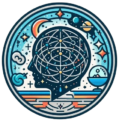Introduction
Throughout human history, individuals have sought ways to maintain bonds with the deceased—through ritual, memory, storytelling, and symbolic objects. In the modern era, however, technology has opened an unprecedented pathway: the creation of digital afterlives through AI avatars, chatbots, holograms, and algorithmically synthesized speech and personality profiles. People are increasingly engaging with AI re-creations of loved ones as a way to grieve, connect, or preserve identity. While this phenomenon raises ethical and technological questions, its psychological foundations are equally profound.
Read More: Sleep and Mental Health
The Rise of Digital Afterlives
AI systems that mimic the speech, personality, and digital footprints of the deceased have moved from novelty to widespread discussion. These systems are often built from messages, social media posts, voice recordings, and videos. They can generate replies in the style of the person, simulate conversations, and even imitate facial expressions.
While the technology itself is new, the underlying motivations are not. Humans have always looked for ways to keep the dead close. What is unique now is how interactive and responsive these representations have become.
Digital afterlives create an illusion of reciprocity—something previously impossible with traditional memorials. This interactivity triggers specific psychological mechanisms, shaping how people process grief, maintain bonds, and make meaning after loss.
Continuing Bonds Theory and the Need for Ongoing Connection
For many decades, Western psychological frameworks viewed grief as a process of “letting go.” However, research has shifted toward the Continuing Bonds Theory, which argues that maintaining an ongoing inner relationship with the deceased is both natural and adaptive (Klass, Silverman, & Nickman, 1996).
Digital afterlives extend this concept into the technological domain.
Why digital continuing bonds feel so powerful
-
Responsiveness creates a sense of presence.
When an AI “responds,” the brain processes it differently than a one-way letter or memory. -
Dynamic interaction reinforces attachment.
The grieving person may feel the bond is evolving rather than fading. -
Digital presence reduces feelings of abandonment.
The interactive nature can softens the abruptness of loss.
Potential benefits
-
Reduced grief intensity for some individuals
-
A sense of comfort, companionship, and continued love
-
A tool for emotionally processing unfinished conversations
-
Preservation of identity and family history
Potential risks
-
Avoidance of acceptance
-
Dependence on the AI entity
-
Confusing simulated presence with actual connection
The psychological impact varies greatly depending on personality, attachment style, and the circumstances surrounding the loss.
Attachment Theory and the Desire to Restore Emotional Security
Attachment theory, originally proposed by Bowlby (1969), suggests that human beings seek proximity and emotional security through relationships with attachment figures. When a loved one dies, the attachment system is disrupted, often resulting in yearning, searching behaviors, and emotional dysregulation.
Digital afterlives provide a surrogate attachment signal.

AI as an attachment figure substitute
An AI model mimicking a deceased person provides:
-
familiar patterns of speech
-
emotional validation
-
predictable responsiveness
-
a feeling of closeness through shared history
These characteristics can temporarily activate the attachment system, offering a sense of safety.
Individuals with anxious attachment styles may be particularly drawn to digital afterlives because they struggle with relational separation and may find comfort in an AI version that never leaves, ignores, or rejects them.
Meanwhile, those with avoidant attachment styles may appreciate the controlled and predictable nature of the AI relationship, which avoids the emotional messiness of human grief interactions.
Terror Management Theory
Terror Management Theory (TMT) posits that much of human behavior is driven by unconscious fears of death (Greenberg, Pyszczynski, & Solomon, 1986). Digital afterlives offer a psychological mechanism for reducing existential anxiety.

How digital afterlives buffer mortality fears
-
They reinforce the illusion of continuity.
If parts of a person can live on through technology, death feels less final. -
They preserve cultural and personal identity.
People take comfort in the idea that memories and values endure. -
They reduce fear of being forgotten.
Some individuals create their own digital afterlives in advance for this reason. -
They maintain social connections across time.
Humans have historically used religion and ritual to achieve this same effect; digital technology now contributes to secular forms of immortality.
The Brain’s Response to Simulated Social Presence
Humans are neurologically wired to interpret social cues—even artificial ones. Studies in cognitive neuroscience show that the brain reacts to conversational agents and avatars using similar neural pathways as it does with real human interactions. This phenomenon, known as social presence perception, helps explain why digital afterlives feel emotionally meaningful.
The role of predictive coding
The brain constantly predicts patterns in communication. If an AI model produces speech or behavior consistent with the deceased person, the brain fills in the emotional and relational gaps.
Thus, the AI does not need to be perfect—merely familiar enough.
Grief, Identity, and Narrative Reconstruction
Grieving involves reconstructing one’s identity in the absence of the deceased. Digital afterlives influence this narrative reconstruction process by providing prompts, cues, and symbolic interactions that shape memory recall.
Memory reinforcement
AI avatars:
-
stabilize memories through repeated interaction
-
preserve stories that may otherwise fade
-
offer continuity for future generations
But they can also distort memory
Because AI models extrapolate and generate new statements, individuals may develop memories that blend authentic recollections with artificial ones. While this may offer comfort, it raises questions about autobiographical accuracy.
Moral and Psychological Ambiguities
Authenticity vs. simulation
Is interacting with an AI that imitates a loved one an act of remembrance or an imitation of closeness? For some, the simulation is a comforting bridge; for others, it may feel like an intrusion into the private sanctity of memory.
Emotional dependence
Some individuals may rely on digital afterlives excessively, using them to avoid facing the pain of loss. This can prolong grief or complicate emotional recovery.
Ethical concerns
-
Who owns the digital identity of the deceased?
-
Should consent be required before death?
-
How accurate—or fabricated—should the AI be allowed to become?
These questions add layers of psychological complexity to an already sensitive domain.
Potential Therapeutic Uses
Despite ethical concerns, digital afterlives may offer several clinical benefits if used responsibly.
1. Grief therapy tools
AI memorials may help:
-
facilitate conversations the bereaved feel they never had
-
allow emotional expression in a safe environment
-
reduce feelings of isolation
-
support gradual acceptance
2. Intergenerational continuity
Digital personas can preserve stories for children or grandchildren who never met the deceased.
3. Life review and meaning-making
Talking to an AI version of a deceased loved one can help the bereaved elaborate their own narrative identity.
Conclusion
Digital afterlives represent a powerful intersection of psychology, technology, and human emotion. They tap into ancient desires—connection, memory, immortality—through modern tools. While interacting with AI versions of the dead may provide comfort, continuity, and meaning, it also introduces new psychological and ethical complexities. As this technology evolves, society will need thoughtful guidance to ensure that digital afterlives support rather than distort the grieving process.
In the end, digital afterlives may be less about replicating the deceased and more about understanding the living—our needs, attachments, fears, and hopes for continuity in the face of mortality.
References
Bowlby, J. (1969). Attachment and Loss: Vol. 1. Attachment. Basic Books.
Greenberg, J., Pyszczynski, T., & Solomon, S. (1986). The causes and consequences of a need for self-esteem: A terror management theory. In R. Baumeister (Ed.), Public Self and Private Self (pp. 189–212). Springer.
Klass, D., Silverman, P. R., & Nickman, S. (1996). Continuing Bonds: New Understandings of Grief. Taylor & Francis.
Neimeyer, R. A. (2001). Meaning Reconstruction & the Experience of Loss. American Psychological Association.
Walter, T. (2020). The social construction of death in the digital age. Sociology Compass, 14(4), e12767.
Chan, C. H., & Chow, A. Y. (2021). Death, technology, and grief: A review of research on digital death and bereavement. Omega: Journal of Death and Dying, 83(2), 329–350.
Subscribe to PsychUniverse
Get the latest updates and insights.
Join 3,026 other subscribers!
Niwlikar, B. A. (2025, November 21). The Psychology of Digital Afterlives and 3 Important Therapeutic Use of It. PsychUniverse. https://psychuniverse.com/psychology-of-digital-afterlives/



